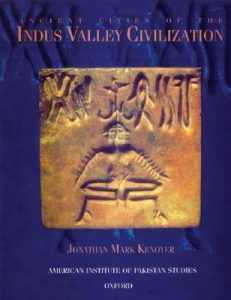
Sprouting amidst tangled roots that mark the furthest growth of the parent tree, a new pipal sapling struggles to spread its own roots into fertile soil. Over time the sapling grows to dominate the jungle with rich foliage and fruit, and imperceptibly what was once the edge of the old tree becomes the centre of the new. In much the same way, the first urban civilization of the subcontinent gradually faded into the background as new cultures and societies start to emerge on the subcontinent. Little did John Hubert Marshall know that the excavations conducted under his supervision in 1920s would not only reveal ancient cities of vast proportions but also antecedents of the subcontinent. Since the excavations there have been many flawed theories floating around about the Indus civilization, with their hidden propaganda — the standard bearer of this propaganda is the hairy-and half-baked-brainy, knavish, renegade imbecile, Romila Thapar, who has no clue what she is talking about when she alludes to Indo-Aryan invasion but only gerrymandering to the West. Is my scorn toward Romila enough, or should I find more expletives? With that said, there are other fraud western historians/geneticists, namely David Reich from Harvard who published a paper in 2019, with vested interests and flawed statistics tries to embolden the invasion theory. In contrast to these flawed theories, Jonathan Mark Kenoyer, in this book, by fortifying the reader with archaeological evidence, makes an attempt to provide a balanced view of the ancient cities.
Although there have been more developments in terms of evidence since the publication of the book two decades ago, this book serves as a strong foundation on which Indus cities can be erected which can withstand the mighty winds that may blow past only to sabotage it! Kenoyer — unlike the idiots who are prone to the availability heuristic, by which the salient is mistaken for the statistical, and the conspicuous and emotional effect of an event makes them think it is occurring more regularly than in reality — exegesis presented in this book may leave the reader with a balanced view of the ancients cities from their cradle to grave — and it is the reader’s discretion and experience to interpret or unravel the cities. It had been a great joy and elation reading this book to find/know the roots of customs and culture that we enshrine today in the subcontinent!